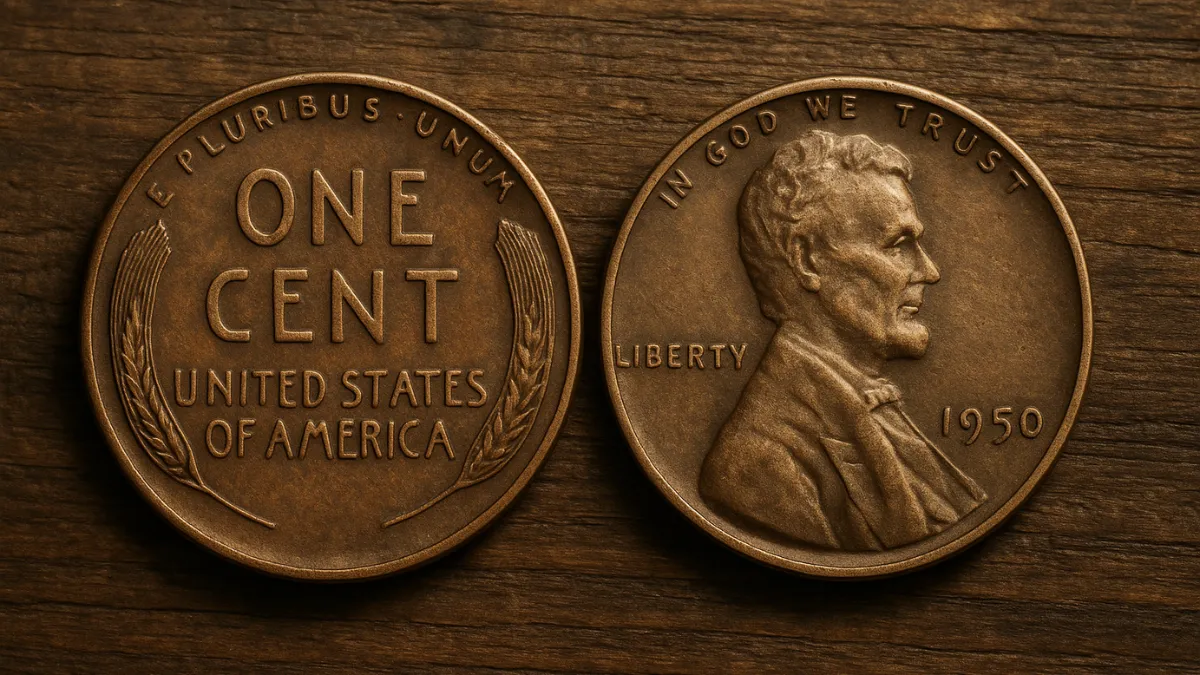Imagine reaching into your pocket and pulling out a penny — nothing unusual, right? But what if that penny was actually worth a staggering $258,000?
You might not expect much from a common penny, but some Lincoln Wheat pennies have been auctioned for extraordinary amounts — even as high as $258,000. These coins, among the most famous in U.S. history, can still be found in everyday circulation. That’s right — there’s a chance a highly valuable penny could be sitting in your change jar.
This article dives into why the Lincoln Wheat penny holds such a special place in numismatics, what makes certain ones so valuable, and how you might unknowingly be carrying a fortune in your pocket.
What Is the Lincoln Wheat Penny?
First minted in 1909 to honor Abraham Lincoln’s 100th birthday, the Lincoln Wheat penny became the first U.S. coin to feature a real person — Lincoln — on the front. On the back, two wheat stalks gave the coin its nickname.
Produced until 1958, these pennies were once common in everyday life. While most are only worth face value today, certain rare years, mint locations, and production flaws have made specific coins extremely valuable to collectors.
Why Are Some Lincoln Wheat Pennies Worth So Much?
Several factors can greatly increase a Wheat penny’s value:
1. Rarity
Some pennies were made in very small quantities or have unique characteristics that make them hard to find. A well-known example is the 1909-S VDB penny, which is rare because of its limited production in San Francisco.
2. Minting Errors
Mistakes during production can make a coin much more desirable. These include doubled images, missing letters, or off-center designs. Collectors prize these flaws because they are so unusual.
3. Condition
How well a coin has been preserved is crucial. Coins that look nearly new — without scratches or wear — are called “mint state” and are worth far more. Experts like PCGS and NGC grade coins to confirm their quality.
4. Historical Significance
Some coins gain value due to their place in history. If a penny connects to a key moment in time or has a compelling backstory, it becomes even more appealing to collectors.
The $258,000 Lincoln Wheat Penny
One amazing story involves a Lincoln Wheat penny that sold for $258,000. This particular coin stood out because of its rare year, mint mark, and exceptional condition. After experts authenticated and graded it, the penny was confirmed to be a rare gem.
What’s even more surprising is that this penny wasn’t sitting in a collection — it was found in everyday change. It proves that rare and valuable coins can still be hidden in plain sight.
Why Are Such Valuable Coins Still Found in Circulation?
It may sound surprising, but high-value coins still pop up in regular change. Here’s why:
- Lack of Knowledge: Many people don’t realize they own a rare coin.
- They Look Ordinary: Unless you know what to look for, valuable pennies seem no different from common ones.
- Constant Movement: Coins are passed between people, machines, and banks for decades. Rare ones can be mixed in.
- Old Collections: Sometimes coins from family collections are unknowingly spent or donated.
How to Spot a Valuable Lincoln Wheat Penny
If you want to check your pennies, use this guide:
- Check the Year and Mint Mark: Coins like the 1909-S VDB, 1914-D, and 1922 “No D” are especially rare.
- Look for Errors: Doubled letters, missing designs, or misaligned images are signs of minting mistakes.
- Assess the Condition: Sharp lines, no scratches, and bright color mean better value.
- Avoid Cleaning: Cleaning damages coins and reduces their worth.
- Get It Checked: Send it to a certified grading company like PCGS or NGC for verification.
The Emotional and Historical Value of Lincoln Wheat Pennies
Beyond their financial value, Wheat pennies also carry historical and sentimental significance. They represent a piece of America’s story and celebrate one of its most respected presidents. Every coin tells a tale — of the hands it passed through and the times it witnessed.
Owning a rare penny is like owning a piece of history.
What Should You Do if You Find a Rare Penny?
Think you’ve found a rare Lincoln Wheat penny? Here’s what to do:
- Don’t Clean It: Cleaning can destroy a coin’s surface and reduce value.
- Handle With Care: Hold it by the edges to avoid damaging the face.
- Have It Verified: Get professional grading to confirm rarity and condition.
- Keep or Sell: Decide if you want to treasure it or sell it. Auctions and collectors often pay high prices for rare coins.
Conclusion: Could Your Spare Change Hold $258,000?
It’s exciting to imagine that a coin in your wallet could be worth thousands. Though rare, discoveries like the $258,000 Wheat penny do happen. Many valuable coins are still out there, waiting to be found.
By learning what to look for, you might uncover a small fortune in your loose change. So the next time you come across a penny, take a second look — it could be far more valuable than you think.
Susan is a seasoned finance writer with a knack for breaking down complex money topics into clear, actionable advice. With years of experience in personal finance, investing, and market trends, she empowers readers to make smarter financial decisions. Her work has been featured in leading finance blogs and publications, where she combines sharp analysis with relatable storytelling. Whether it’s budgeting, wealth-building, or decoding the latest economic shifts, Susan’s mission is to help people take control of their financial future with confidence.
